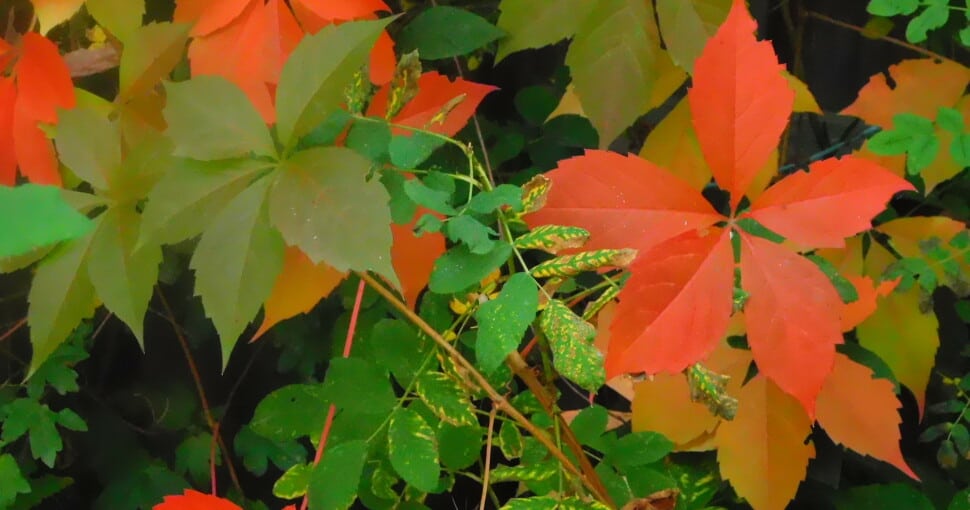The Virginia Creeper (Parthenocissus Quinquefolia) is a vine plant. It’s part of the grape family and produces small, grape-like purple flowers. Virginia creepers are native to North America. As the name suggests, they are creepers (vines). Virginia creepers have oval, jagged green leaves that turn orange in the fall.
Contents
- 1. Poison Ivy (Toxicodendron Radicans)
- 2. Blackberry (Rubus Rosaceae)
- 3. Pacific Poison Oak (Toxicodendron Diversilobum)
- 4. Poison Sumac (Toxicodendron Vernix)
- 5. Raspberry (Rubus Idaeus)
- 6. Boxelder (Acer Negundo)
- 7. Climbing Hydrangea (Decumaria Barbara)
- 8. Hog Peanut (Amphicarpaea Bracteate)
- 9. Bush Killer Vine (Causonis Japonica)
- 10. Strawberry (Fragaria Rosaceae)
Despite the Virginia creeper having various characteristics that make it easy to identify it, there are still other plants that look like it. Here are ten examples of plants that look like the Virginia Creeper:
- Poison Ivy – The leaves look like those of a Virginia Creeper.
- Blackberry – The leaves resemble the Virginia Creeper.
- Pacific Poison Oak – The plant structure resembles a Virginia Creeper.
- Poison Sumac – The plant structure looks like a Virginia Creeper.
- Raspberry – The leaves resemble those of a Virginia Creeper.
- Boxelder – The leaves look like a Virginia Creeper.
- Climbing Hydrangea – It is also a vine with similar leaves.
- Hog Peanut – The plant structure looks like a Virginia Creeper.
- Bush killer vine – This vine has leaves like a Virginia Creeper.
- Strawberry – Strawberry leaves remind one of Virginia Creepers.
Considering that some of the plants above are edible (most aren’t), it’s essential to know how to tell them apart. So, let’s consider how these plants look like the Virginia Creeper and how they don’t.
1. Poison Ivy (Toxicodendron Radicans)
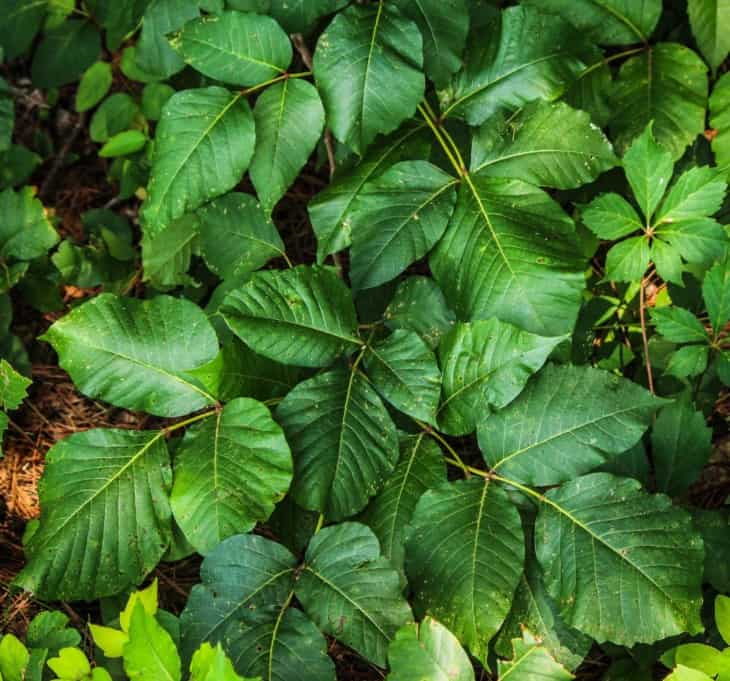
The first plant that resembles a Virginia Creeper, and the one that’s most often mistaken for a Virginia Creeper, is the poison ivy. Poison ivy is native to Asia and North America. Poison ivy can grow as a low-growing shrub or a vine, which is why it is so easily mistaken for a Virginia Creeper.
Related: 8 Plants Similar To Poison Ivy
Poison ivy has a simple leaf, just like the Virginia Creeper. The leaves are smooth or slightly jagged, which is also similar to the Virginia Creeper. The easiest way to tell these plants apart is by looking at their leaves and stems.
While a Virginia Creeper has smooth stems and leaves that grow in clusters of five, the poison ivy’s stems are hairy, and the plant’s leaves grow in clusters of three.
2. Blackberry (Rubus Rosaceae)
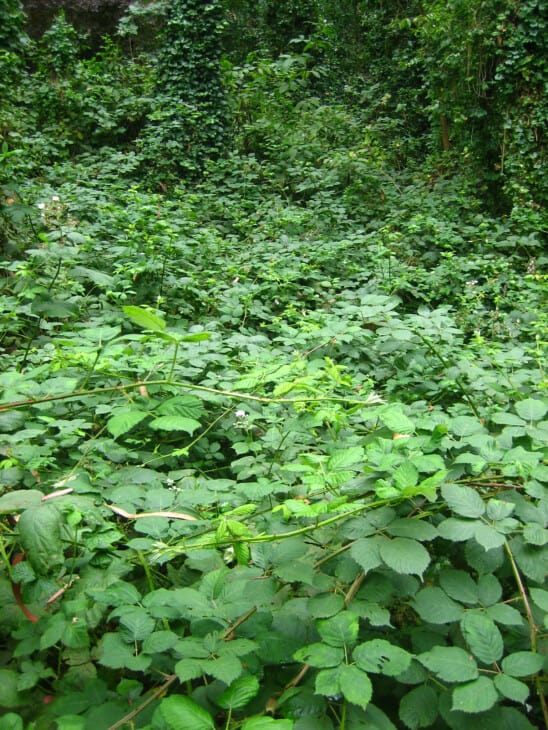
Another plant easily mistaken for a Virginia Creeper is the blackberry bush. Blackberry plants are shrubs. They are native to North America and look like Virginia Creepers, especially while young. Like the Virginia Creeper, a blackberry bush produces oval, simple leaves that are slightly jagged.
The flowers also somewhat resemble those of a Virginia Creeper. They are small, white, and grow in tiny clusters. However, unlike the Virginia Creeper, a blackberry bush’s leaves grow in clusters of three. Of course, the blackberry bush also produces berries that don’t look like the grape-like berries of a Virginia Creeper.
Related: 5 Plants Similar To Blackberries
3. Pacific Poison Oak (Toxicodendron Diversilobum)
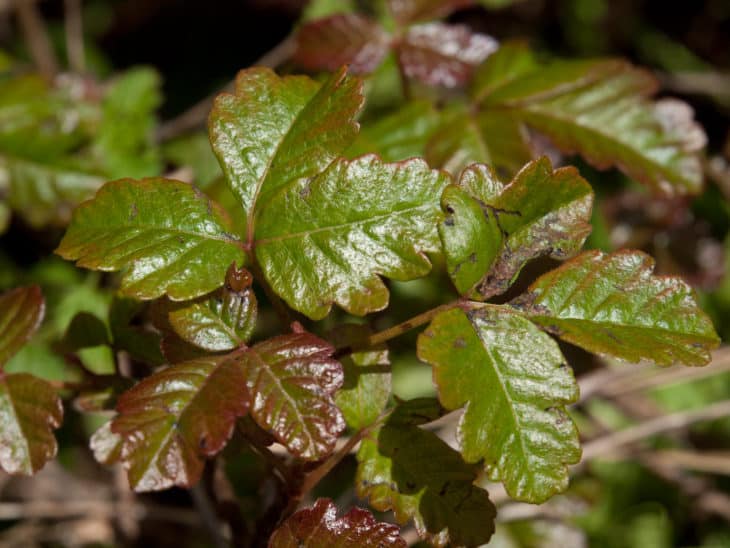
The Pacific poison oak is also easily mistaken for a Virginia Creeper, especially when seeing it from afar. Although a poison oak has deeply lobed leaves, the leaves are oval and slightly jagged, just like a Virginia Creeper.
Poison oak is also native to the woodlands of North America, which is why people often mistake it for a Virginia Creeper. However, unlike a Virginia Creeper, poison oak has oak-like leaves. The poison oak is also a shrub instead of a vine.
Poison oak leaves also grow in clusters of three, not the five we typically see with a Virginia creeper. While the Virginia Creeper usually has smooth stems and leaves, a poison oak’s stems and leaves are covered in fur.
Related: 7 Plants Similar To Poison Oak
4. Poison Sumac (Toxicodendron Vernix)
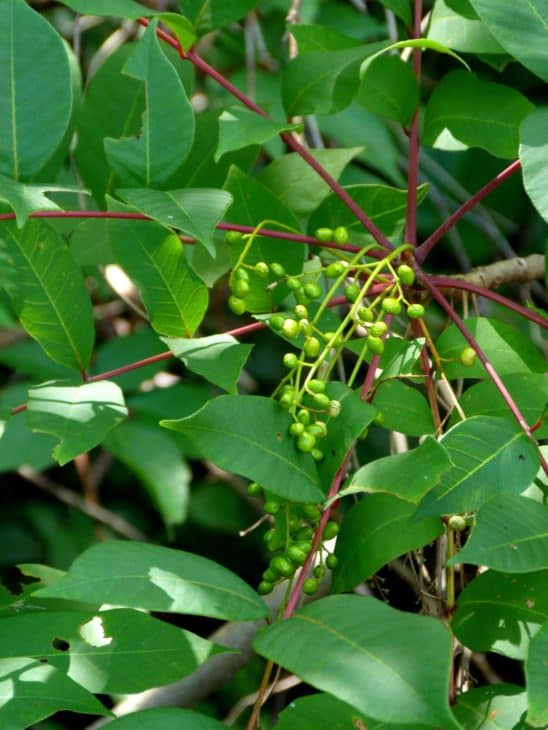
The following plant people sometimes mistake for a Virginia Creeper is a poison Sumac. The poison Sumac, like the Virginia Creeper, is native to North America. You can often see this plant in the wooded areas of Florida. The color of a poison Sumac is close to that of a Virginia Creeper.
The poison Sumac also produces flowers that look like those of a Virginia Creeper. They are small and white and grow in tiny bunches at the ends of stems. However, that’s about where the similarities end. Poison Sumac leaves are much smaller, elongated, and smooth.
They also grow in clusters of about ten leaves on each stem. Moreover, a poison Sumac is a type of tree.
Related: 6 Plants Similar To Poison Sumac
5. Raspberry (Rubus Idaeus)
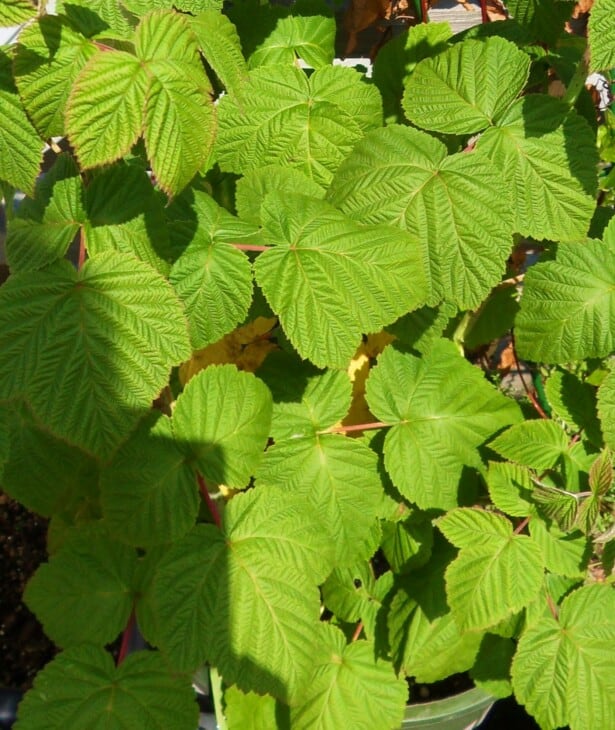
Another edible plant that resembles the Virginia Creeper is the raspberry bush. The raspberry bush is native to Europe and Asia and has leaves that look like those of a Virginia Creeper. A raspberry bush produces large, dark green leaves with serrated edges, much like a Virginia Creeper.
Raspberries produce tiny purple or white flowers that cover the bush. Although their flowers may resemble a Virginia Creeper’s, they don’t grow in the same clusters. The fruit also looks different, which makes it possible to distinguish between a raspberry bush and a Virginia Creeper.
Related: 11 Plants Similar To Raspberries
6. Boxelder (Acer Negundo)
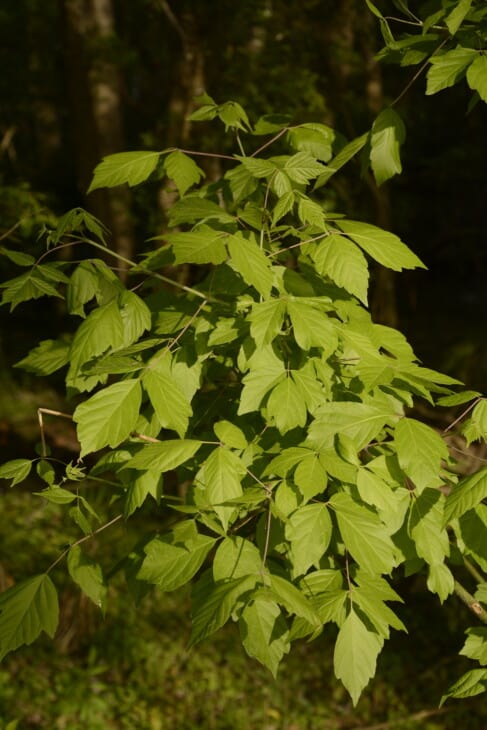
The boxelder is likely one of the plants resembling a Virginia Creeper. The boxelder has smooth stems and oval leaves with serrated edges. Like a Virginia Creeper, the boxelder’s leaves grow in clusters of five, making it easy to mistake one for other, especially when the boxelder is still tiny.
The primary difference between a Virginia Creeper and a boxelder is that a boxelder is a tree. It also produces large orange fruits. There are separate male and female trees, so the flowers don’t look the same. However, neither flower resembles those of a Virginia Creeper.
7. Climbing Hydrangea (Decumaria Barbara)
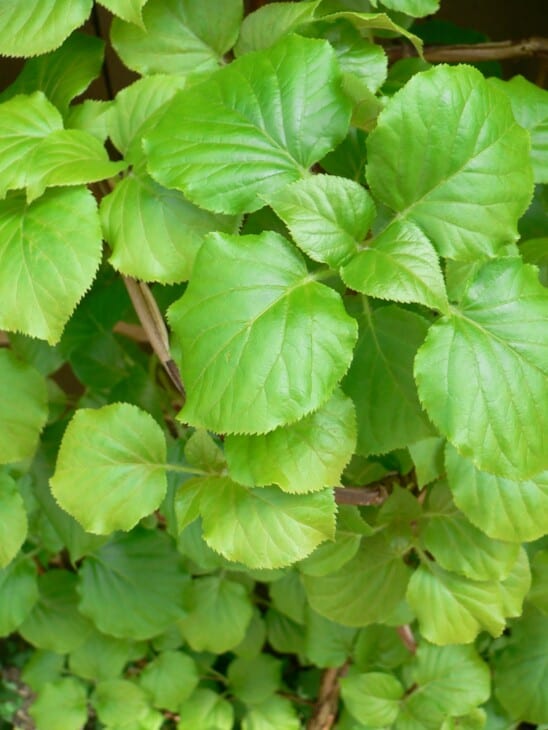
Like the Virginia Creeper, the climbing hydrangea is also a vine. This creeper is native to Siberia, Russia, Japan, and Korea. The climbing Hydrangea has large, oval green leaves with slightly serrated edges, reminding one of Virginia Creeper leaves.
The flowers of a climbing Hydrangea also remind one of a Virginia Creeper. The climbing Hydrangea produces small, white flowers that cluster around the ends of the flower stems. There are, however, some differences between a Virginia Creeper and a climbing Hydrangea.
The climbing Hydrangea doesn’t produce fruit like a Virginia Creeper. Although climbing Hydrangeas won’t irritate your skin like Virginia Creepers, they are still toxic to humans and pets.
Related: 8 Plants Similar To Hydrangea
8. Hog Peanut (Amphicarpaea Bracteate)
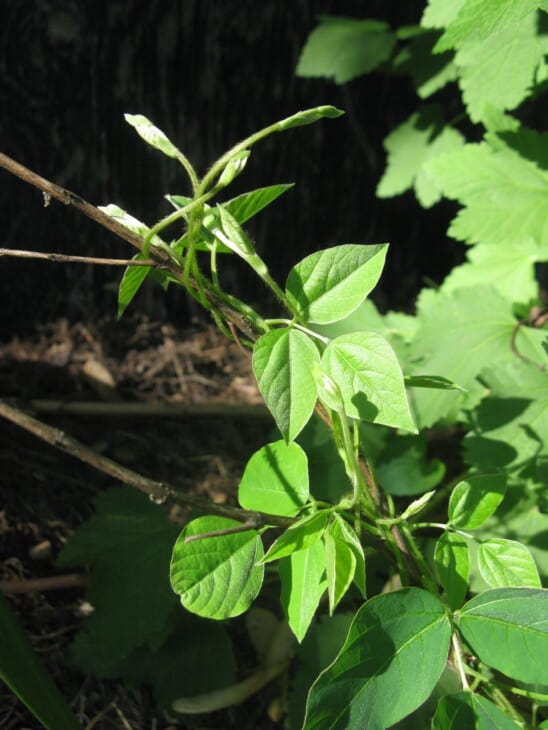
The hog peanut is yet another plant that resembles a Virginia Creeper. Hog peanuts have oval-shaped dark green leaves. Unlike Virginia Creepers, their leaves are smooth at the edges. Hog peanuts are also vines and native to North America, just like Virginia Creepers.
Hog peanuts are a part of the legume family, and their flowers and seeds resemble legumes more than the Virginia Creeper. Hog peanuts produce long, purple flowers that later turn into seed pods. In addition, unlike Virginia Creepers, every part of the hog peanut is edible.
9. Bush Killer Vine (Causonis Japonica)
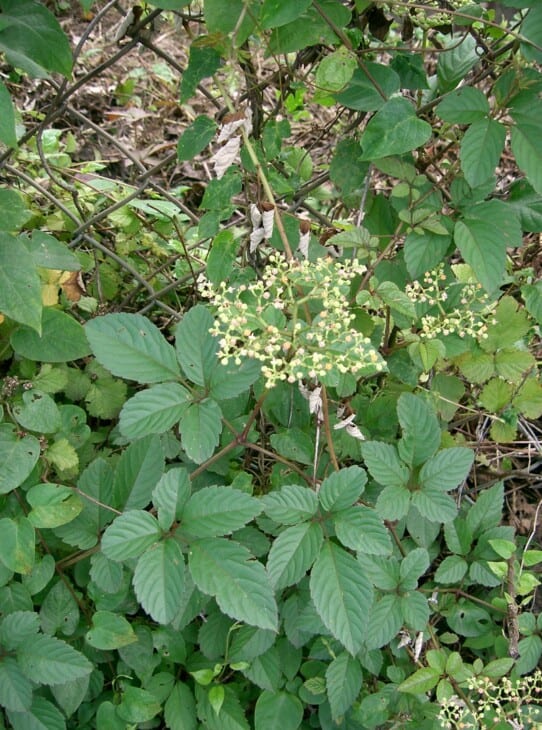
The bush killer vine has some striking resemblance to a Virginia Creeper. For one, it is a vine. The bush killer vine produces oval-shaped leaves with serrated edges that grow in clusters of five, just like the Virginia Creeper.
Bush killer vines also have flowers that look like those of a Virginia Creeper. Bush killer vines produce small, white flowers just like a Virginia Creeper. Bush killer vines don’t produce fruit, however. This vine is an invasive species in America, so you should rid yourself of them as soon as possible.
10. Strawberry (Fragaria Rosaceae)
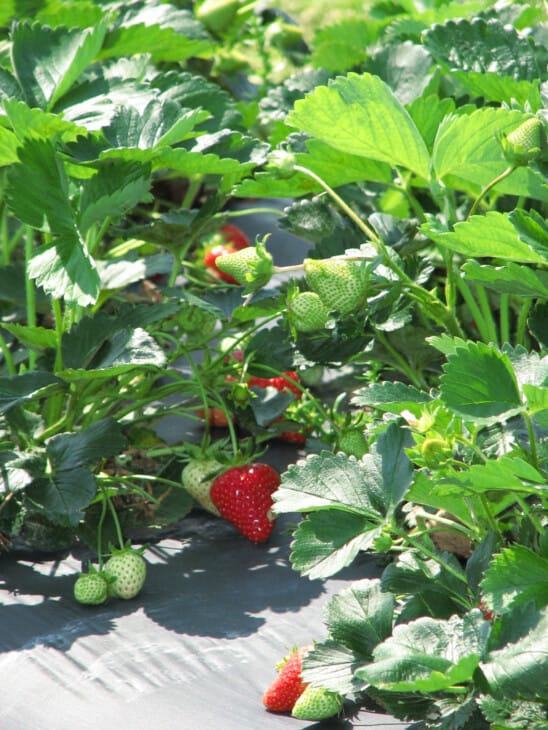
The final plant on this list that looks like a Virginia Creeper is a strawberry bush. Strawberry plants have oval-shaped green serrated leaves that resemble a Virginia Creeper. Strawberries are edible, as you likely already know.
Therefore, it’s only when strawberry plants aren’t flowering or carrying fruit that they resemble Virginia Creepers.
Related: 8 Plants Similar To Strawberries

